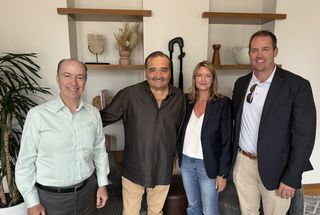Hotel Investment & Development Trends: Key Takeaways from Cayuga’s Annual Conference

Moderator: Jon Peck, President of Peck Hotel Consulting, and Cayuga Hospitality Consultant
Panelists:
- Renee Bagshaw, COO, Continental Contractors
- Mike “Woody” Woodward, CGO, HVMG
- Rick Tomljenović, COO, Tristar Hotel Group
Industry and Market Outlook
Current State of the Hotel Industry
The hotel industry is a bit boring right now from a deal perspective: RevPAR growth remains muted, transaction volume has declined, and new hotel development lags well below historical standards.
Industry forecasters project modest year-over-year RevPAR growth of 1.5-2%, with operating expense inflation expected to outpace revenue growth, further pressuring profit margins. In this challenging environment, Mike Woodward emphasized that with a lot of uncertainty in the hospitality industry, it is more important than ever to have a team in place that is more proactive than reactive.
What Projects Are Moving Forward?
Ground-Up Development
Mid-scale extended stay properties currently represent the most viable ground-up development opportunity, though even these projects struggle to achieve acceptable returns under current market conditions.
Office Conversions
The panel discussed the potential for repurposing high-vacancy office buildings into hotels. However, panelists generally agreed that such projects require significant design creativity and some form of government incentive or subsidy to achieve financial viability.
Renovation Projects
Renovation work continues to represent the bulk of current construction activity. Existing owners are upgrading properties both to maintain competitive positioning and to prepare for potential sale. Recent hotel acquirers typically face Property Improvement Plan (PIP) requirements and must address deferred maintenance on major building systems and physical plant infrastructure.
Renee Bagshaw noted that hotel renovation projects face increasing complexity, driven largely by concerns over tariffs, supply chain issues, and financing costs
. She emphasized that successful projects now require early collaboration among general contractors, design teams, and purchasing departments, with careful attention to project phasing.
Capital and Financing Landscape
Traditional Lending
Traditional lenders remain active for high-quality assets in strong markets with reputable brands—when the economics work. However, the lending environment has tightened considerably. Leverage levels remain depressed, interest rates stay elevated (though showing signs of moderation), and loan covenants have become more restrictive.
Multiple panelists highlighted that debt coverage ratios now exceed pre-pandemic levels, creating significant challenges for distributing cash flow to limited partners.
Private Credit
Private credit remains an available alternative, though the cost of capital remains close to mafia rates. While private credit can serve as a short-term gap financing solution, its pricing makes it impractical for long-term use or as a substantial portion of the capital stack.
Looking Ahead
The economics of hotel investment have fundamentally shifted. As Rick Tomljenovic observed, “Ever evolving market conditions, cost increases and rapid technological advances have added additional levels of complexity to the hospitality industry.”
In today’s environment, engaging experienced subject matter experts and qualified partners has never been more critical. This is particularly true for new market entrants, where the right expertise can help minimize risk, maximize opportunity, and ultimately deliver acceptable returns on investment.